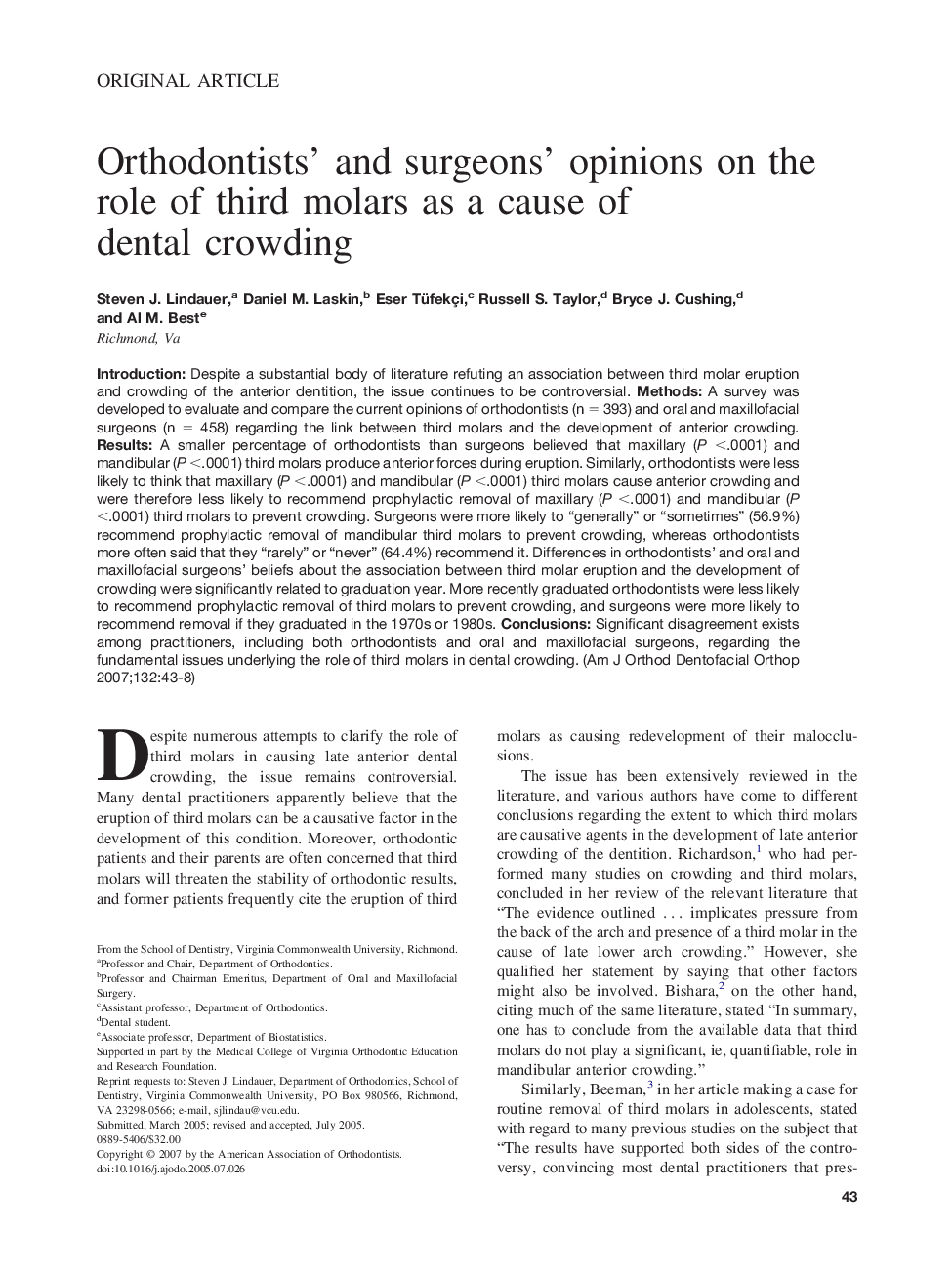| Article ID | Journal | Published Year | Pages | File Type |
|---|---|---|---|---|
| 3118566 | American Journal of Orthodontics and Dentofacial Orthopedics | 2007 | 6 Pages |
Introduction: Despite a substantial body of literature refuting an association between third molar eruption and crowding of the anterior dentition, the issue continues to be controversial. Methods: A survey was developed to evaluate and compare the current opinions of orthodontists (n = 393) and oral and maxillofacial surgeons (n = 458) regarding the link between third molars and the development of anterior crowding. Results: A smaller percentage of orthodontists than surgeons believed that maxillary (P <.0001) and mandibular (P <.0001) third molars produce anterior forces during eruption. Similarly, orthodontists were less likely to think that maxillary (P <.0001) and mandibular (P <.0001) third molars cause anterior crowding and were therefore less likely to recommend prophylactic removal of maxillary (P <.0001) and mandibular (P <.0001) third molars to prevent crowding. Surgeons were more likely to “generally” or “sometimes” (56.9%) recommend prophylactic removal of mandibular third molars to prevent crowding, whereas orthodontists more often said that they “rarely” or “never” (64.4%) recommend it. Differences in orthodontists’ and oral and maxillofacial surgeons’ beliefs about the association between third molar eruption and the development of crowding were significantly related to graduation year. More recently graduated orthodontists were less likely to recommend prophylactic removal of third molars to prevent crowding, and surgeons were more likely to recommend removal if they graduated in the 1970s or 1980s. Conclusions: Significant disagreement exists among practitioners, including both orthodontists and oral and maxillofacial surgeons, regarding the fundamental issues underlying the role of third molars in dental crowding.
